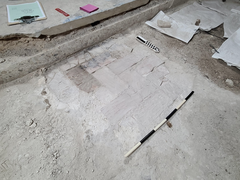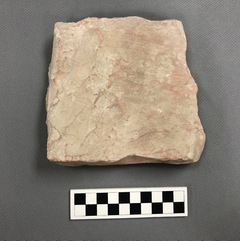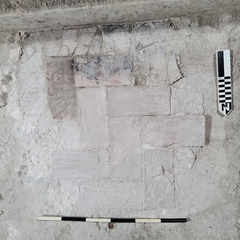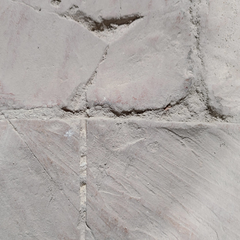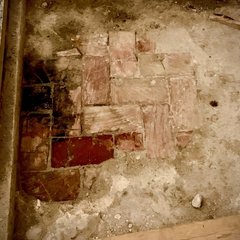Archaeological work conducted by Pape Dawson continued within Crockett and Bonham Streets as part of the Phase I of the Alamo Plan. Much of the work that occurred over the past week consisted of the excavation of a utility trench along Bonham and Crockett streets, as well as the excavation of utility vaults and tie-ins. Much of this work has encountered previously disturbed soils.
Archaeological work conducted by Raba Kistner associated with the preservation of the historic structures has slowed, allowing time for the placement of sensors for moisture monitoring and backfilling units once the sensors were placed. Of interest recently, sweeping and cleaning of an area outside of excavation units, but where the flagstone and concrete had been removed within the Temporary Sacristy inside the Church, revealed a section of intact floor tiles.
According to Alamo Curator Ernesto Rodriguez, a section of intact tile had been observed near the threshold between the Sacristy and the Temporary Sacristy rooms approximately 20 years ago. At one time a plexiglass window allowed visitors to see the section at the threshold. During the archaeological investigations, no intact sections were encountered, although loose tiles were recovered in the upper levels. These were collected at the time, but to be able to see another intact section within the room is exciting as much as it is informative.

